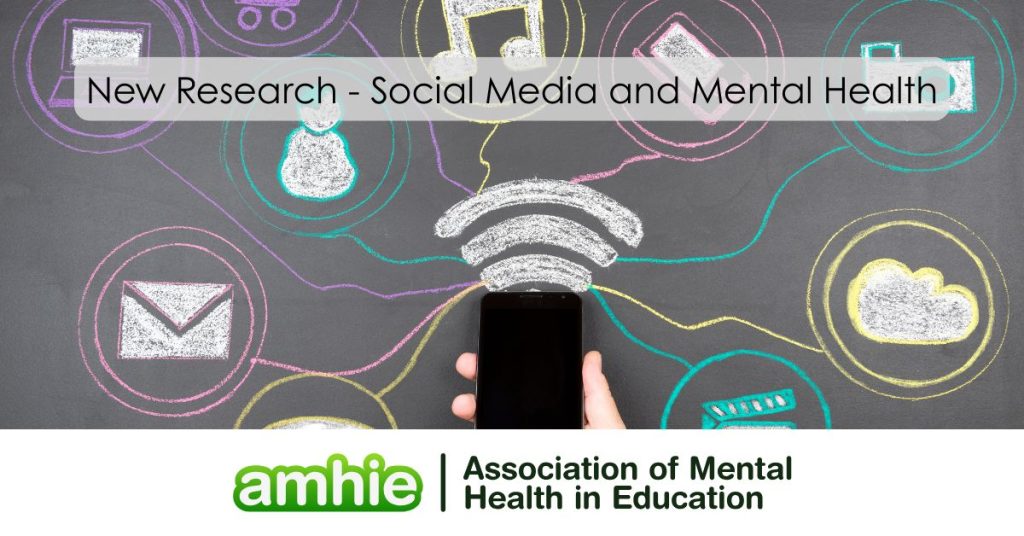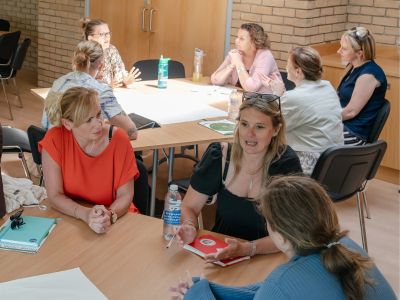
A new study published this week links social media use with lowered cognitive function
The new study suggests a link between social media use and poorer cognition in teens. The findings are published in JAMA.
“Social media is an increasingly important aspect of early adolescent lives, and trajectories of use have been correlated with negative psychosocial outcomes. Studies of the link between total screen time and cognitive performance in those aged 9 to 11 years from the Adolescent Brain Cognitive Development (ABCD) study have shown mixed results. However, unlike passive screen time, social media use typically involves interactive, personalized, and cognitively demanding activities, yet there is a paucity of studies that have analysed the associations between distinct longitudinal social media usage patterns and multiple domains of cognitive functioning.
This study examined the relationship between longitudinal patterns of social media use and cognitive performance 2 years later in a diverse, national sample of early adolescents. The study hypothesis was that greater social media use would be associated with lower cognitive performance.
This analysis found that both low and high increases in social media use throughout early adolescence were significantly associated with lower performance in specific aspects of cognitive function, supporting a prior finding that greater screen time was negatively but weakly associated with adolescent cognitive performance.”
“This is a really exciting study,” says psychologist Mitch Prinstein at the University of North Carolina at Chapel Hill, who wasn’t involved in the new research. “It confirms a lot of what we have been hearing about from schools all across the country, which is that kids are just having a really hard time focusing on being able to learn as well as they used to, because of the ways in which social media has changed their ability to process information, perhaps.” NPR 2025
Affects on mental health
Studies consistently link problematic or excessive social media use (SMU) to a range of adverse mental health outcomes in adolescents and young adults. Problematic SMU—defined by addiction-like symptoms such as preoccupation and compulsion despite negative consequences—is a stronger predictor of ill-being than mere time spent on platforms.
Meta-analyses show statistically significant correlations between problematic SMU and negative symptoms, including anxiety (r=0.348), stress (r=0.313), and depression (r=0.273) (Shannon et al., 2022). Further, excessive use is associated with poor sleep quality and disturbances, particularly when used close to bedtime, which increases cognitive arousal and delays sleep onset. Poor sleep, in turn, may partially mediate the link between SMU and poor mental health.
Adverse effects are often driven by specific content and behaviours:
- Social Comparison: Exposure to idealized, appearance-focused content drives higher appearance-ideal internalization and social comparison, leading to lower body satisfaction and subjective well-being in both boys and girls.
- Fear of Missing Out (FOMO): Constant checking fuels anxiety related to FOMO, leading to a vicious cycle of increased platform engagement.
- Infodemic Knowledge: During crises, exposure to an overwhelming volume of complex or false information can induce psychological distress, fear, and fatigue.
- Academic and Cognitive Decline: Excessive use can lead to distractions and time mismanagement. Longitudinal patterns suggest increasing SMU in early adolescence is associated with lower performance in specific cognitive functions, potentially displacing time spent on educational activities.
However, not all engagement is harmful. Specific types of use, particularly one-to-one or one-to-few communication (e.g., messaging), can support mental health by mitigating loneliness and offering a coping mechanism for stress, especially when experiences are positive. Quality rather than the sheer quantity of online interactions is the critical factor in determining the impact on young people’s mental health.
Social media management?
The core challenge social media presents in the classroom is its tendency to cause distraction, time mismanagement, and loss of focus, ultimately diminishing concentration and academic performance. The constant stream of notifications can displace time that should be spent on schoolwork, potentially reducing performance in cognitive areas like language knowledge.
To mitigate these effects, you can implement a three-pronged strategy focused on discipline, alternatives, and purposeful integration:
1. Promote Digital Citizenship and Self-Regulation
Shift the focus from banning to mindful use.
- Raise Awareness: Teach students directly about the documented negative impact of excessive social networking on their academic motivation and focus.
- Offer Training: Provide explicit lessons on time management and self-regulation strategies, helping students balance online social life with academic duties.
- Guide Healthy Habits: Emphasise responsible and ethical digital citizenship. Guide students to view social media as a supplement, not a primary distraction, to their learning. Minimising non-academic distraction during school time is a critical, shared goal.
2. Utilise Structured Alternatives and Countermeasures
Counteract the allure of excessive digital media by promoting healthy, structured activities.
- Foster Structure: Encourage and provide structured daily activities during the school day. Evidence suggests students with more structured activity engage less intensely in screen-based leisure.
- Encourage Academic Focus and Exercise: Promote focused reading, studying, and physical activity. These activities serve as effective countermeasures, lessening both problematic internet use and psychological distress.
- Delineate Screen Time: Clearly define and reinforce the difference between productive (academic) screen time and recreational/distracting use, ensuring devices are tools for learning, not mood disturbance.
3. Harness Social Media for Academic Engagement
Instead of viewing social media as only a threat, harness its potential to channel motivation toward constructive learning goals.
- Integrate Relevant Content: Leverage the platforms’ motivational aspects by integrating engaging, relevant content into learning activities (e.g., for language learning).
- Facilitate Collaborative Learning: Use social media features to set up avenues for sharing information and facilitating group collaboration, enhancing knowledge acquisition and boosting engagement.
- Use Interactive Tasks: Incorporate tasks that utilize platform features for interactive, collaborative work, reframing them as dynamic educational tools that inspire creative thinking and intellectual curiosity.
By focusing on discipline, promoting healthy alternatives, and purposefully integrating platforms, educators can empower students to manage their digital lives effectively
Develop and hone your whole-school strategies with AMHIE Membership

AMHIE Educational Setting Membership ensures your staff maintain continuous proficiency in identifying and addressing threats to mental health and wellbeing. Members gain full access to a complete library of compliance-based CPD courses, expert toolkits, and evidence-based resources covering DfE/Ofsted compliance, Staff Wellbeing, and SEND. This essential package equips your setting to meet professional and legal obligations, reducing risk and burden through timely, actionable guidance.
The total annual saving on staff development, through full access to all member training courses, amounts to a massive £1239 + VAT per person!
Elevate your school’s mental health strategy and unlock these significant savings. Join AMHIE today!
References:
Chatterjee, Rhitu. Kids who use social media score lower on reading and memory tests, a study shows. NPR. 2025
Favero, Michelle. 10 Facts about teens and social media. Pew Research Centre 2025
Jason M. Nagata, MD, MSc; Zain Memon; Jonanne Talebloo, BA; Karen Li, MPH; Patrick Low, BA; Iris Y. Shao, PhD, MPH; Kyle T. Ganson, PhD, MSW; Alexander Testa, PhD; Jinbo He, PhD; Claire D. Brindis, DrPH; Fiona C. Baker, PhD. Prevalence and Patterns of Social Media Use in Early Adolescents. Received for publication August 9, 2024; accepted January 7, 2025. Academic Pediatrics. 2025; 25:102784
Nagata JM, Wong JH, Kim KE, et al. Social Media Use Trajectories and Cognitive Performance in Adolescents. JAMA. Published online October 13, 2025. doi:10.1001/jama.2025.16613
Shannon H, Bush K, Villeneuve PJ, Hellemans KG, Guimond S Problematic Social Media Use in Adolescents and Young Adults: Systematic Review and Meta-analysis
JMIR Ment Health 2022;9(4):e33450
